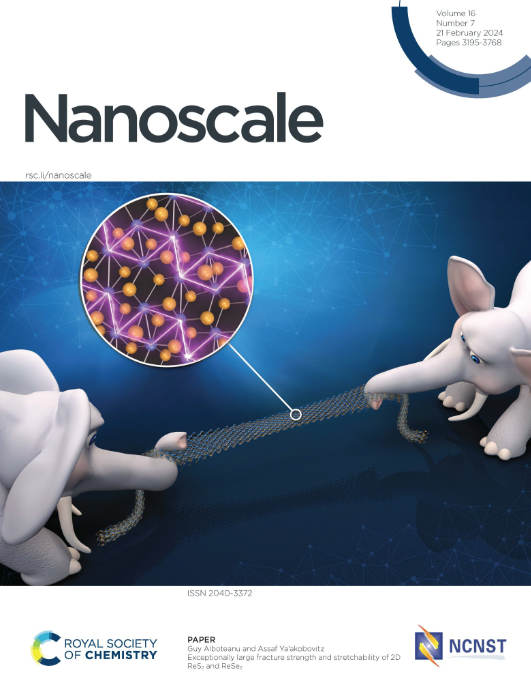通过射频产生的氮等离子体在边缘富集的 MoS2-x 纳米结构中进行 P 型掺杂
IF 5.8
3区 材料科学
Q1 CHEMISTRY, MULTIDISCIPLINARY
引用次数: 0
摘要
这项工作展示了一种合成垂直排列边缘富集 MoS2(v-MS)纳米结构的直观磁控溅射技术。通过改变溅射过程的参数,可以改变合成纳米结构的形态和取向。这项工作强调了磁控溅射合成不同取向二维纳米结构的多功能性。这些结构可以有多种应用,如光电、氢进化、传感器、储能和催化。我们利用场发射扫描电子显微镜和拉曼光谱技术确认了 MoS2 的垂直排列纳米结构。此外,我们还研究了基于等离子体的氮掺杂工艺,该工艺可将氮原子引入二维纳米材料,且损伤极小。在氮环境中产生的等离子体,在简单的射频(RF)电源辅助下,被用于 v-MS 中的 p 型掺杂。利用拉曼光谱和 X 射线光电子能谱对氮的成功掺杂进行了研究。原子力显微镜图像证实,氮掺杂技术导致的表面损伤很小。开尔文探针力显微镜和紫外光电子能谱研究了掺杂导致的功函数变化。光学发射光谱(OES)研究揭示了氮等离子体离子在掺杂过程中的作用,其表面损伤极小。这项研究表明,通过等离子体处理,MoS2 纳米材料的功函数得到了有效抑制。本文章由计算机程序翻译,如有差异,请以英文原文为准。
P-type doping in edge-enriched MoS2-x nanostructure via RF generated nitrogen plasma
This work shows an intuitive magnetron sputtering technique to synthesize vertically aligned edge-enriched MoS2 (v-MS) nanostructures. The morphology and orientation of the as-synthesized nanostructure can be modified by altering the parameters of the sputtering process. This work emphasizes the versatility of magnetron sputtering to synthesize different orientated 2D nanostructures. These structures may have diverse applications, such as optoelectronics, hydrogen evolution, sensors, energy storage and catalysis. The vertically aligned nanostructure of MoS2 is confirmed using the field emission scanning electron microscopy and Raman spectroscopy techniques. Furthermore, we studied the plasma-based nitrogen doping process with minimal damage for introducing nitrogen atoms into 2D nanomaterials. A plasma produced in a nitrogen environment, assisted by a simple radio frequency (RF) power supply, is employed for p-type doping in v-MS. The successful doping of nitrogen has been investigated through the use of Raman spectroscopy and X-ray photoelectron spectroscopy. The atomic force microscope images confirm the little surface damage resulting from the nitrogen doping technique. The change of work function resulting from doping is examined by Kelvin Probe force microscopy and ultraviolet photoelectron spectroscopy. Optical emission spectroscopy (OES) study reveals the role of nitrogen plasma ions in doping with minimal surface damaging. This work demonstrates the effective intimidation of the work function of the MoS2 nanomaterial via plasma treatment.
求助全文
通过发布文献求助,成功后即可免费获取论文全文。
去求助
来源期刊

Nanoscale
CHEMISTRY, MULTIDISCIPLINARY-NANOSCIENCE & NANOTECHNOLOGY
CiteScore
12.10
自引率
3.00%
发文量
1628
审稿时长
1.6 months
期刊介绍:
Nanoscale is a high-impact international journal, publishing high-quality research across nanoscience and nanotechnology. Nanoscale publishes a full mix of research articles on experimental and theoretical work, including reviews, communications, and full papers.Highly interdisciplinary, this journal appeals to scientists, researchers and professionals interested in nanoscience and nanotechnology, quantum materials and quantum technology, including the areas of physics, chemistry, biology, medicine, materials, energy/environment, information technology, detection science, healthcare and drug discovery, and electronics.
 求助内容:
求助内容: 应助结果提醒方式:
应助结果提醒方式:


